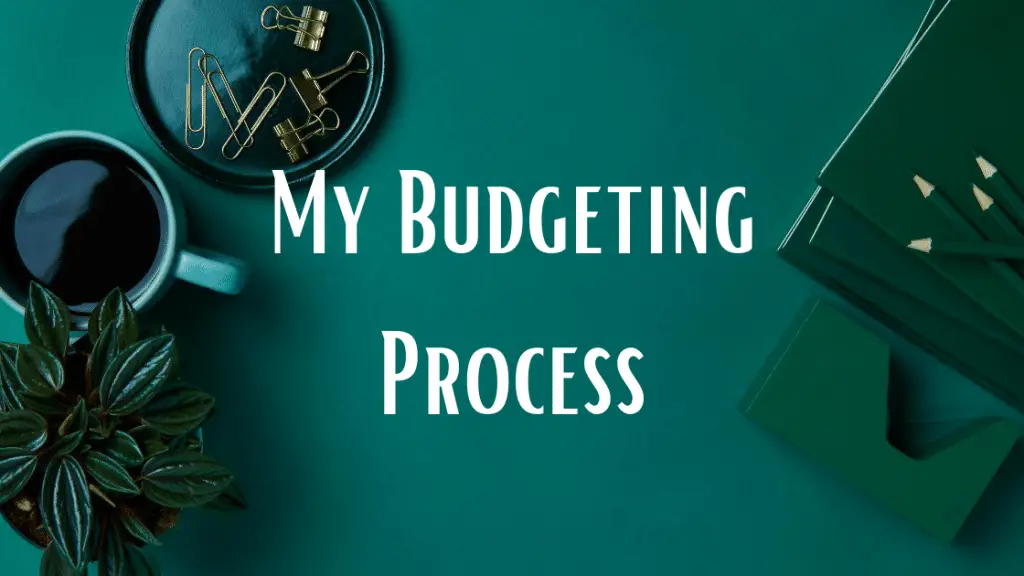Do you always find yourself running out of cash at the end of the month? Frustrated at your inability to pay off debt or build up savings? You’re in the right place. I’ll run through the 5 most common methods you can use to show you how to budget your salary wisely.
How to budget salary wisely
The first part of budgeting your salary wisely is to have a budget in the first place. Luckily, there are plenty of approaches which are:
- 50/30/20 method
- Give every pound a home (aka “zero-based budget”)
- Pay yourself first
- Line-item budgeting
- Combination of all four
Once you have set yourself a budget, the next step is to stick to it. Sticking to your budget is also harder than it seems. A few strategies that are effective:
- Old school spend tracking
- Use a budgeting app to track your spending against budget (useful for all of the strategies above)
- Physical envelope method
- Digital envelope method
See related: How to stick to your budget when nothing works
50/30/20 Method
This method was coined and popularised by Elizabeth Warren, via her book written with her daughter; “All Your Worth: The Ultimate Lifetime Money Plan”. She’s got great credentials, as a Harvard bankruptcy expert and US Senator.
The advantage with the method is the simplicity. Managing your finances shouldn’t be complicated or difficult, it just requires you to balance your income against your needs, wants and savings.
As a result, this technique is brilliant for complete beginners to budgeting.
How does the 50/30/20 budgeting method work?
Firstly, all of these percentages are calculated using your after-tax income.
If you receive a regular salary, your after-tax income should simply be the amount of money you receive into your bank account each month. However, if you want to calculate it, jump over to a calculator such as The Salary Calculator take-home pay calculator.
The 50/30/20 method works like this:
50% of your after-tax income should be dedicated towards your needs. Needs are things that provide your shelter, food, safety and transportation. Basically, things you cannot do without. Your needs are things such as:
- Rent/mortgage payments
- Utilities bills
- Transport costs (if you don’t need to commute to work, this could arguably be classed as a “want” instead of a “need”)
- Insurance coverage
- Basic groceries
- Minimum loan repayments
30% of your after-tax income can be dedicated towards your wants. Wants are the desirable things that you don’t need, but you want. Such as:
- Going out for dinner
- Clothes
- Holidays
- Monthly subscriptions on entertainment or news such as Netflix, Spotify, magazines etc.
- TV/Entertainment packages over and above the basic
- Non-essential groceries
- Gym membership
This is a very simple rule of thumb to understand whether you are overspending on your wants.
Sometimes it is quite difficult to classify an expense into one of the two camps; a need or a want. If you find yourself in this position, just ask yourself “can I live without this?”. If the answer is yes, then it is a want.
20% of your after-tax income should be dedicated towards your savings and investing goals. This includes paying over and above your existing minimum repayments to pay off your debt faster. Other typical goals this 20% helps to work towards are:
- Building up an emergency fund
- Saving for a house deposit or a wedding
- Investing for a child’s future education, retirement or a passive income stream
Give Every Pound A Home aka “Zero-Based Budget”
This budgeting technique was popularised by Dave Ramsey of personal finance fame. This method makes sure every single pound of your income has a home before it has even landed into your bank account. This makes sure that your budget “balances” and equals zero, but gives you more flexibility to control the proportions that you are budgeting for different items.
Just because your budget equals zero doesn’t mean you have zero money. You’ll have allocated budgets for your different spending categories as well as knowing that you’re saving an amount that you’re happy with.
This is a more complex budgeting method than the 50/30/20 method. This is because it will require you to jot up budgets for more granular categories rather than just “needs” and “wants”.
Of course, keeping these larger categories are still important. If you decide that your current savings rate is not high enough, you will want to cut your budget from certain areas to achieve a higher savings rate. It will be a lot easier cutting from your “wants” categories than it will from your “needs”.
See related: easy and painless ways to save money every month
How does the Zero-Based Budget method work?
- Tally up your after-tax income as you did before
- Start tallying up your “need” expenses such as rent, utilities, insurance and your minimum debt repayments. These should be fairly stable and you can find them by combing through your bank statement.
- Start tallying up your “want” expenses such as clothes, eating out, entertainment, subscriptions, gym memberships etc. For this you’ll likely want to run through some past bank statements to be sure you’re capturing an average spend.
- Include a line item for saving/debt repayment but keep it blank for the time being
- Subtract all of your expense categories from your income to see how much you have “left”
- If you are not happy with the amount you have left to save, or if it is less than zero, then tweak your budgeted amounts for your “wants” categories until you are able to save each month.
- Enter this into your “savings” line you created.
- Your budget now sums down to zero, and you now have a home for every penny once you receive it.
Pay Yourself First
This budgeting technique is the most hands-off of the bunch.
To follow this, you simply need to specify your desired savings rate or amount. Once you receive your paycheck, you simply transfer this amount to your savings account (or into your investment account or to make additional debt repayments).
You then pay your expenses out of the remaining balance.
The benefit of this approach is with its simplicity and time-saving. You won’t be spending time tracking your spending throughout the month and fretting about any overspend.
However, the downside is that if you do tend to overspend, you won’t have visibility on where you went wrong compared to your budget. It is also suited best for people who are already in a decent financial position with positive spending habits.
Even though this method is the easiest, in terms of executing it, I would recommend this only to people who have good spending habits currently and are generally in a good financial position.
How do you use the Pay Yourself First method?
Work out your desired savings rate or amount. This is either the percentage of your after-tax income that you want to save each month or the amount.
As an example, if you wanted to save 30% of your after-tax income and you receive £1,800 per month after tax you would save £540 per month.
Then when your paycheck lands into your account, transfer this £540 into a separate saving account so you won’t be tempted to spend.
Even though the appeal of this method is its ease, do bear in mind that even this method will require you to run through a more detailed budget at one point in your life. This is because you’ll need to make sure you’ve got your “needs” covered after taking out your savings.
Line-item budgeting
This is probably what people think of when they think of a budget.
Imagine a list of all of your income at the top and a list of all of your expenses underneath. This is classic, line-item budgeting.
This departs from the “give every pound a home” method by not requiring you to allocate out your savings/investments. But in reality, the only difference is that the amount you can save/invest is going to be the leftover cash after you’ve paid all of your expenses from your income.
This is a great method for people who want to track their spending and tweak their budgets at a super granular level.
You have the flexibility to choose the level you go to, either keeping your budget simple with grouping your expenses into “needs” and “wants”, or expanding to breakdown into “rent”, “utilities”, “transport“, “eating out” etc.
If you’re new to the budgeting game or struggle to stick to your budget, then this is a good technique for you to try as it will force you to become more engaged with your finances in detail. Understanding where your money goes and deliberately working out the trade-offs required when building your budget is the best way to build your ability to manage your money.
How do you use the line-item budgeting method?
Make a list of your expected after-tax income in each month.
Then break out the main expense categories you have each month. Order these from needs at the top to wants at the bottom. You can break down into whatever level of detail that you want to set your budget at.
Run through your previous bank statements to work out your average spend per category (e.g. groceries or car costs), which acts as a handy starting point.
From that starting point, set yourself a budget for each of your categories
You can then subtract all of your expenses from your income. This residual amount you can use to save, invest or pay off debt.
If you aren’t happy with the amount, or if it is negative, then continue to tweak your budgeted amounts until you are happy.
See related: How to save money fast – 17 easy wins you can implement today
Now you have a budget, you’ll need to stick to it!
For me, this was by far the hardest part of my budgeting cycle.
I’d set my budget out nicely and be stoked at the progress I’d be making. But then I’d just completely blow my budget and be left with nothing of my expected “savings”. Grrr.
The key to sticking to your budget is having a feedback loop which tells you whether you are overspending. Then hopefully you can slow down!
Some of the best ways to do this are:
Old-school spend tracking
Just because it is old-school, doesn’t mean it is any less effective.
Take out a piece of paper and literally tot up your expenses on a weekly or monthly basis to see how you are doing compared to your budget. If you are concerned in the middle of the month, then do it on a weekly basis and you can adjust your spending if you are well ahead of your budget.
Doing it on a monthly basis will provide you with a good opportunity to reflect on how your month went. It will also provide you with the data to pinpoint any areas you missed your budget.
The benefit of manually tracking your spend is that it forces you to engage with your spending data and categorise each transaction. Even though this is laborious, it forces you to really understand each transaction.
Budgeting apps
However, tracking your spend manually can take a lot of time. As with almost everything else, there are a tonne of apps that can help you with this task.
Budgeting and spend tracking apps can plug into your bank accounts to automatically pull in and categorise the transactions. You can set your budgets for each category and then track your spending against those on the fly. Some even provide personalised insights and coaching which help you identify wasteful subscriptions or tell you when you’re on track to beat budget.
The three spend tracking apps I have previously reviewed are Emma, Yolt and Money Dashboard.
See related: Yolt vs Money Dashboard vs Emma
Physical envelope method
As with the manual spend tracking method, this is a little old-school. But cor does it work. I tried this briefly whilst I was at university and it kept me straight as an arrow.
It’s simple. Calculate your weekly or monthly budgeted amount for your more discretionary spending categories such as “groceries”, “eating out” and “entertainment”. Take these amounts out in cash and pop said cash in a labelled envelope.
Then whenever you want to pop to the shops, take some cash from the “groceries” envelope. The physical sign of the envelope getting smaller as the week or month goes on acts as a hell of a feedback loop to say you need to slow down!
The downside of this technique is of course the inconvenience and the risk of holding cash from theft. You can mitigate this by only taking out the weekly budget at a time.
The other downside is that this is only relevant for the more discretionary-type categories. You don’t want to be withdrawing your rent and bills money as you’ll likely only need to deposit it again in order to pay via bank transfer!
Digital envelope method
This is a more convenient take on the physical envelope method, taking advantage of the tech we have available to us.
Instead of taking your cash out of the bank and stuffing in an envelope, you can transfer your more discretionary spending categories such as groceries, eating out and entertainment into a separate current account. Then when you’re out and about, only carry that card. This means that no matter where you are, you can easily check your account and you’ll know how much you have left to spend.
The digital method goes one step further though. You can also allocate your money out into separate pots based on the purpose you have allocated the money. For example, if you are saving £50 per month for a holiday, you can set up a separate savings account and drop that £50 into it each month. Similarly, if your rent and bills come to £1,000 per month, you can set up a separate account which you drop the £1,000 into each month and have your bills set up to be automatically paid via direct debits and standing orders.
See related: How to stick to your budget when nothing works
Alternatively, an app like Goodbudget will provide you the framework to create virtual envelopes which you can track your spend against. For those of you who are sceptical about Open Banking, you’ll be pleased to hear Goodbudget is ol’ trusty manual input. For the rest of us, this might seem more of a curse than a blessing. Either way, envelope budgeting is effective so tinker with and find the tools that work best for you.
Conclusion – how to budget salary wisely
No matter your current budgeting experience or financial situation, there will be a budgeting technique that fits you. To work out how to budget salary wisely, you’ll need to be engaged and aware of your expenses.
The four methods you can use to budget salary wisely range from the simplistic 50/30/20 rule, the stripped-back Pay Yourself First method and advance to the more intensive, but rewarding, Zero-Based Budget and Line-Item Budgeting methods.
But remember, the hard bit is actually sticking to your budget. To stick to your budget, you’ll need to track your spending so you can slow down when you need to. Either track your spend manually, automate it with an app, or use one of the two envelope methods.
These techniques and tools should be dynamic. One person will likely change from one to the other throughout their life as their situations change. You may change from a line-item budget to a “pay yourself first” budgeting method once you’ve got healthy spending habits and are in a good financial position. Whatever works for you, works for you!
There’s a quick roundup of how to budget your salary wisely. But what budgeting method do you use and how do you keep with it? Let me know in the comments section below.
Why starting to save when you’re young is so important (I wish I did more of it!)
I’m sure most people are in the same camp as me, but I regret not…
Average Food Bill Per Month in the UK – How Do You Compare?
It is often quite difficult to figure out whether your budgeted weekly food budget figures…
How To Cancel Stitch Fix UK
Giving your finances a trim is a great idea to save some easy money. Looking…
Plum vs Moneybox: Can One of These Boost Your Wealth?
Since Open Banking came into play, competition has heated up in the financial services space….
Moneyfarm vs Nutmeg – The Battle of the Robo Advisors
Looking to invest to reach your financial goals? Fortunately investing nowadays is much more accessible…
Yolt vs Money Dashboard vs Emma – The Comparison!
Don’t want to dust off a spreadsheet? A budgeting app can do most of the…
Does PayPal Credit Affect Credit Score?
Even though consumer credit, in general, has shrunk in the UK since the start of…
3 of the Best Budgeting Apps for Young Adults in the UK
As a young adult with a wealth of opportunity ahead of you, I salute you…
Budget Like A Boss – What Does My Budgeting Process Look Like?
If you’ve decided you need a budget, most people tend to advise a very similar…












Pingback: How to set up a budget in Google Sheets | The Mindful Money Project
Pingback: Best Budgeting Apps for Families | The Mindful Money Project
Pingback: How To Stick To Your Budget When Nothing Works
Pingback: What Is A Good Percentage To Save From Your Paycheck?
Pingback: How To Save For A House Deposit In A Year UK - How I Saved £20k+